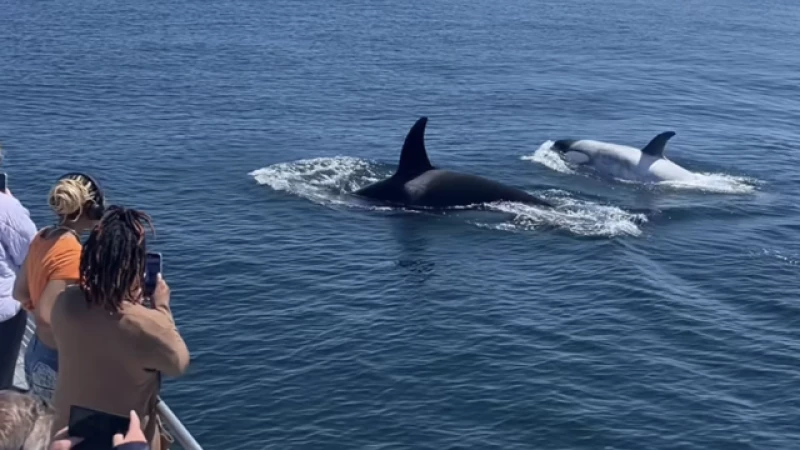A group of seafaring tourists saw something unusual while whale-watching off the coast of Southern California this week. It was a white orca, or killer whale, that has become somewhat famous in environmentalist circles up and down the Pacific Coast over the last few years.
The orca, a calf nicknamed "Frosty" because of its unusually pale appearance, was seen most recently near Newport Beach. Newport Landing Whale Watching, the tour company that led the whale-watching excursion, shared a Facebook reel on Monday that showed the creature swimming with a pod of several other orcas. The company said the pod included six or seven killer whales seen "offshore," which usually means 10 or so miles from land.

Frosty has gained a certain level of celebrity since first being seen near Monterey Bay, in Northern California, in 2019, according to the Pacific Whale Watch Association. At the time, Frosty was just a newborn. The whale has since been sighted as far north as British Columbia.
Orca whales, top marine predators found worldwide, are known for their long lifespans, with females living up to 90 years and males up to 60 years. They typically reach maturity in their pre-teen or teenage years. Frosty, a member of the transient Bigg's killer whale population, stands out due to its extremely rare lack of typical black-and-white coloring.
The Oceanic Society reported in 2022 that Frosty is one of only a handful of known killer whales with leucism, a condition causing partial loss of pigmentation. This results in a pale, white, or patchy appearance. Previously, a leucistic whale was spotted in Alaska, making Frosty a rare and remarkable find in the world of orcas.
Leucism is distinct from albinism, as it does not result from a genetic mutation that hinders melanin production, the pigment responsible for an animal's coloration. While albino animals are typically white with pink or red eyes, those with leucism may retain some pigmentation. Although experts have primarily identified Frosty as leucistic, there are suggestions that the whale might actually have Chediak-Higashi Syndrome, an autoimmune disorder that also reduces pigmentation and is exceedingly rare. Chimo, another well-known white killer whale, was afflicted with Chediak-Higashi Syndrome and passed away in the early 1970s due to complications from the illness. A postmortem examination later confirmed this diagnosis.







